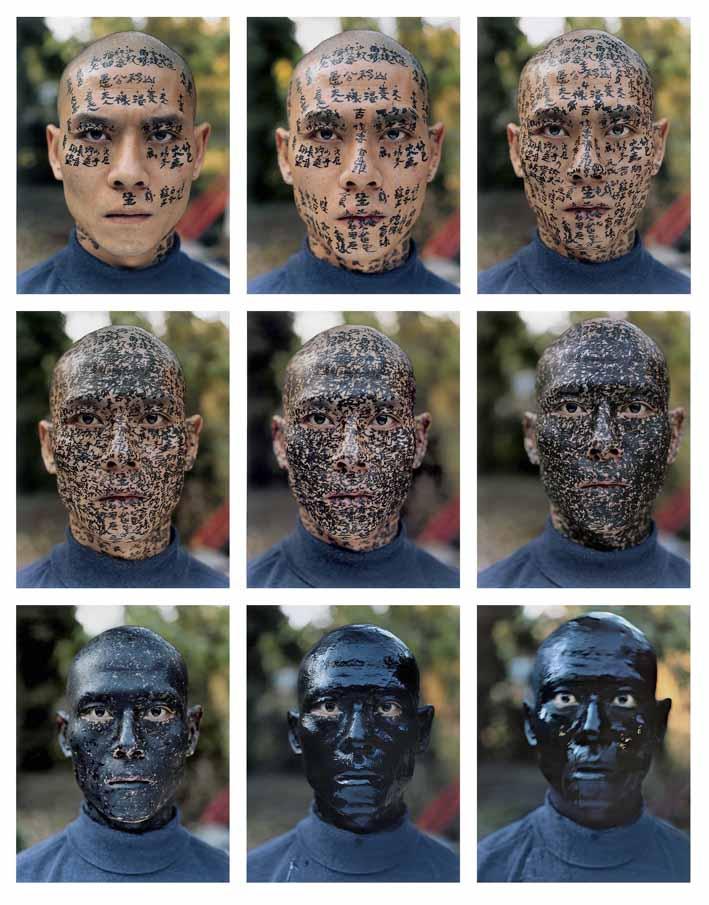THIS WELL-RECEIVED exhibition on contemporary Chinese ink art presents works 70 by 35 artists born in China. It explores the idea of China’s age-old habit of seeking cultural renewal through the reinterpretation of past models. How the past can be the future. Although all of the artists have transformed their sources through new modes of expression, visitors will recognise thematic, aesthetic, or technical attributes in their creations that have meaningful links to China’s artistic past.
For more than two millennia, ink has been the principal medium of painting and calligraphy in China. Since the early twentieth century, however, the primacy of the “ink art” tradition has increasingly been challenged by new media and practices introduced from the West. Ink Artexamines the creative output of a selection of Chinese artists from the 1980s to the present who have fundamentally altered inherited Chinese tradition while maintaining an underlying identification with the expressive language of the culture’s past.
Chinese Contemporary Ink Art
Organised thematically, the exhibition is in four parts and includes such well-known works as Xu Bing’s dramatic Book from the Sky (circa 1988), an installation that fills an entire gallery; Family Tree (2000) by Zhuang Hang is a set of vivid photographs documenting a performance by Zhang Huan in which his facial feature (and his identity) are obscured gradually by physiognomic texts that are inscribed directly onto his face; and Map of China (2006) by Ai Weiwei, which is constructed entirely of wood salvaged from demolished Qing-dynasty temples.
The Written Word
The four parts are as follows. Section 1: The Written Word. Writing is China’s highest form of artistic expression as well as its most fundamental means of communication. Valued for both its semantic content and aesthetic significance, the written word conveys personal as well as public meaning. Given the inherent power of this universal medium, the written word – particularly brush-written calligraphy – has been a rich terrain for artistic exploration in China. The exhibition features key early works by Xu Bing (b 1955), Gu Wenda (b 1955), Qiu Zhijie (b 1969), and Zhang Huan (b 1965) – all of whom have found ways to subvert the semantic and aesthetic functions of language.
New Landscapes – Ai Wei Wei
Section 2 is entitled New Landscapes. For more than 1,000 years, landscape imagery has been used to convey values and moral standards, both of individuals and of society as a whole. Today, as China is being transformed by modernisation, artists continue to mine the symbolic potential of landscape imagery to comment on the changing face of China and to explore the ‘mind landscape’ of the individual.
A rich selection of paintings, photographs, videos, and films in this section highlight the diverse ways in which contemporary artists have drawn inspiration from earlier compositions and themes. On view are works by Ren Jian (b 1955), Liu Dan (b 1953), and Yang Yongliang (b 1980), all of whom have revived and transformed the monumental handscroll format with powerful new imagery.
This section also display works by Ai Weiwei (b 1957), Shi Guorui (b 1964), and Xing Danwen (b 1967) that offer stark commentaries on the impersonal nature of China’s expanding urban landscapes; and works by Fang Lijun (b 1963), Yang Fudong (b 1971), and Qiu Anxiong (b 1972), who use woodblock printing, film, or video to explore man’s increasing disconnection from the natural environment.
Abstraction – Wang Dongling
Abstraction is the title of Section 3. Abstraction is at the heart of Chinese painting and calligraphy. Because the brush mark has always been recognised as a record of the artist’s hand, in addition to performing a descriptive or semantic role, both painting and calligraphy have been valued for their abstract expressive potential.
Benefitting from such a rich tradition of exploiting the abstract and symbolic qualities of painting and writing, contemporary Chinese artists have been able selectively to adopt Western notions of non-figurative art to augment and expand their expressive goals.
The work by classically trained calligrapher Wang Dongling (b 1945), included in this section, exemplifies those artists who have used their command of traditional techniques to create large-scale abstractions emphasising the dynamic gestural qualities of calligraphy while divorcing the work from any suggestion of semantic signification.
Two examples on view from the Divine Light series by Zhang Yu (b 1959) feature circular or rectilinear forms that evoke cosmic events – an exploding star or a planet coalescing from a sphere of gaseous elements – that are at once beautiful and terrifying.
Beyond the Brush – Cai Guo
Section 4 is Beyond the Brush. A final component of the exhibition introduces works that neither fit into the above three thematic categories nor derive their primary identity from traditional forms of ink art; yet they exhibit an ink art aesthetic through their rich associations with Chinese literati pastimes or patronage.
Highlights of Chinese ink art in this section are two performance-related pieces: an album by Cai Guo-Qiang (b 1957) that envisions his plan for Project to Extend the Great Wall of China by 10,000 Meters: Project for Extraterrestrials No. 10, presented together with a three-channel video of the actual event; and Huang Yongping’s (b 1954) 43-foot-long handscroll documenting his installation pieces from 1985 to 2001.
Ink Art: Past as Present in Contemporary China, 11 December 2013 to 6 April 2014, at The Metropolitan Museum of Art, www.metmuseum.org. A Catalogue is available.

